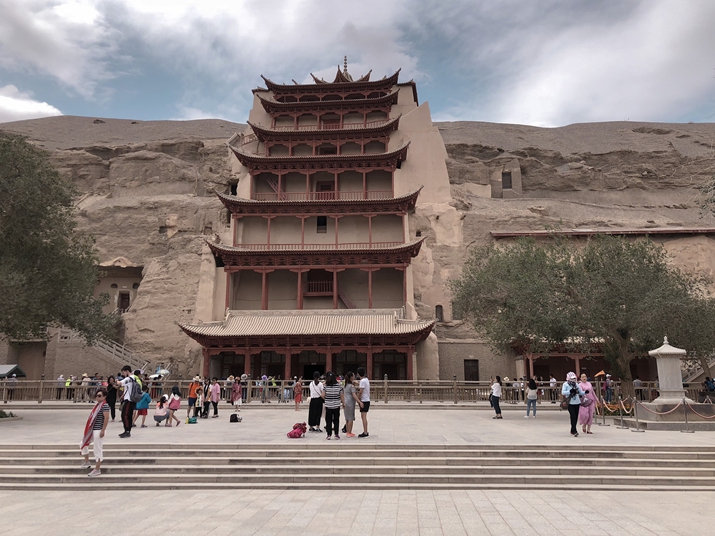Sometime between the fourth and 14th century, Mogao bustled as a thriving Buddhist center connecting East Asia and South Asia. Some 25 km southeast of the oasis town of Dunhuang, in the northwestern province of Gansu, hundreds of caves were carved into a cliff face running along the Daquan River. The Qianfodong, or Caves of the Thousand Buddhas, is a magnificent treasure trove of Buddhist art. Located on the ancient Silk Road, one of the great trade routes of antiquity, they created an environment of artistic and cultural exchange between the diverse cultures that traveled this vast route, stretching from China to the Mediterranean Sea.
My personal odyssey to Dunhuang had taken me, by way of train and bus, from Xining in Qinghai Province to Lanzhou in Gansu Province, and through the Jiayu Pass, the most intact surviving ancient military facility of the Great Wall complex. From there, I continued on through the last gateway in the Great Wall, Yumen Pass, also known as the Jade Gate, and crossed the Gobi Desert to find this small and sleepy desert town, and to see these caves for myself.
At its zenith in the Tang Dynasty (618-907), the fame of the Mogao cave temples ran from the Chinese heartland to the far western kingdoms of Central Asia. As camel caravans arrived along the Daquan River that runs before the temples, silk banners fluttered, gongs chimed, offerings were made, and monks from the local monasteries ushered travelers into the caves.
As I explored the temples, I was stunned by the vividness and life of the paintings and sculptures. It was almost as though they were painted or sculpted the day before. I had discovered the reason why people travel.
Dunhuang itself was founded around 111 B.C. as a military outpost to protect China's northwestern frontier against raids from the Xiongnu, nomads from the Central Asian steppe. At the beginning of the first millennium, Buddhism spread north out of India along these trade routes to the Silk Road oases, passing through Dunhuang on its way further into China. Later on Buddhism fused with Taoism creating the Zen Buddhism that took root in Japan. In many ways, the caves are testament to the evolution and changing nature of Buddhism in China.
There are about 492 cave temples at Mogao, ranging in origin from the fifth to the 13th century. During the thousand years of artistic activity, the style of the wall paintings and sculptures changed. The early caves show greater Indian and Western influences, while during the Tang Dynasty the influences of Chinese painting styles of the imperial court became predominant.
Today, the Mogao Caves stand out from the desert like a glittering pearl on the Silk Road.















